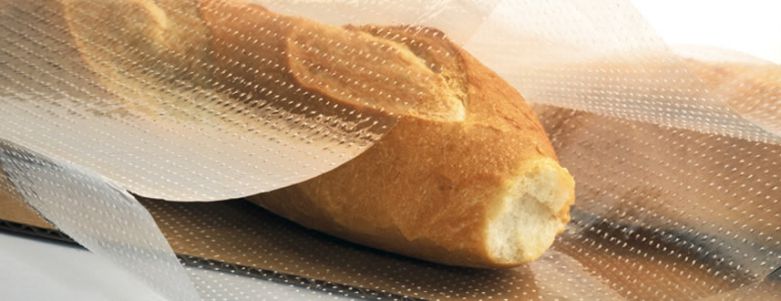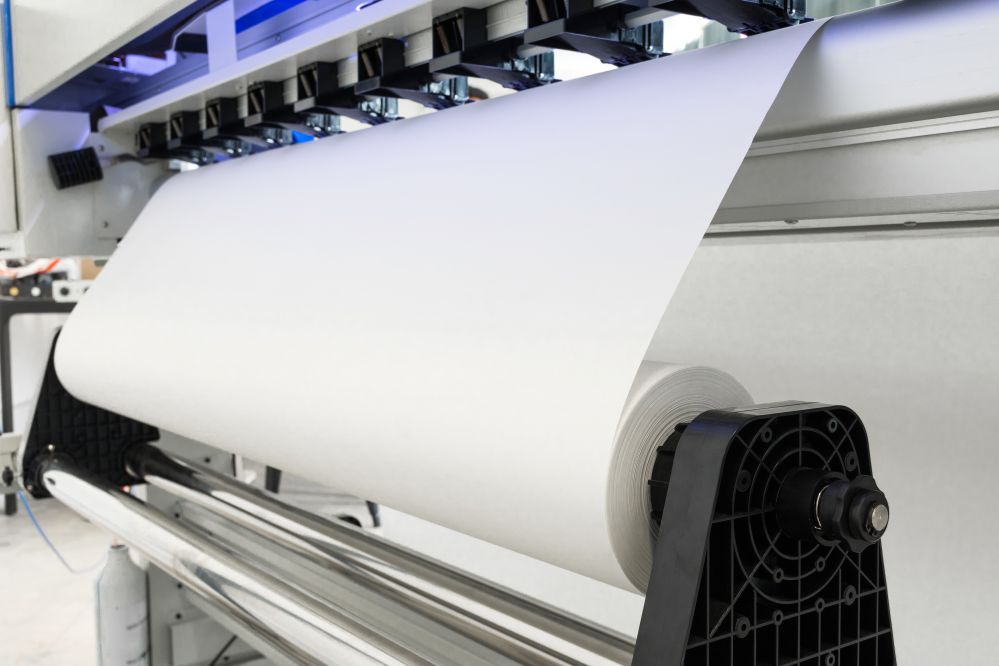Laser kiss cutting (or kiss die cut) consists in removing the superficial portion of a sheet of material according to a specific cutting path. Unlike normal laser cutting, laser kiss cutting does not go through all the material but remains on the surface layer. Due to this characteristic, kiss cutting is mainly used in the paper converting and textile industries.
Laser kiss cutting is used when the superficial layer of a material made up of two attached sheets must be cut.
Laser die cutting of labels is an example of one of the most common applications of kiss cutting. The laser cuts out the surface layer into the shape of the adhesive to facilitate its removal from the support layer.
Laser kiss cutting can also be applied to the field of fabric decoration.
Kiss cutting for digital converting
Digital converting or laser converting is used to perform paper converting processes that would be difficult or impossible to achieve with conventional mechanical methods.
Laser kiss cutting is a typical digital converting application that, as previously mentioned, is particularly used in the production of adhesive labels.
This technique makes production particularly efficient and advantageous, since the costs and time required to set up the machine are eliminated.
In this sector, the materials most used for kiss cutting are:
- paper and derivatives
- polyester
- plastic film
- adhesive tape
Kiss cutting for the textile sector
In the textile industry, laser kiss cutting and laser cutting are used to decorate both semi-finished fabrics and finished garments. In the latter case, laser kiss cutting is very useful for creating personalized decorations.
This technique makes it possible to create different effects such as embroideries, appliqués and labels of various types.
Generally speaking, in this family of applications, two pieces of fabric are sewn together.
Laser kiss cutting then cuts out a shape on the surface layer of the fabric. The upper shape is then removed making the underlying drawing visible.
Kiss cutting is applied mainly on the following textile materials:
- synthetic fabrics in general, in particular polyester and polyethylene
- natural fabrics, especially cotton
The advantages of laser kiss cutting
The kiss cutting technique is not a modern discovery related to laser technology but dates back to traditional printing techniques.
Compared to these mechanical cutting methods based on blades and dies, laser kiss cutting offers several advantages:
- the cutting path can be very complex, making detailed and precise cuts
- the possibilities for customization are innumerable even within the same production cycle
- it can be performed on a large number of materials without interrupting production
- cutting tools don’t get worn during production which therefore eliminates the need for maintenance
- speed, productivity and processing quality are at their maximum
- edges are clean cut and defined and do not need further finishing
The industries of laser kiss cutting
As we have seen, laser kiss cutting is mainly used in the digital converting and textile decoration sectors.
Which laser systems are suitable for laser kiss cutting
Each laser kiss cutting application must be tailor made for each customer’s needs. In the label industry, a system consisting of a CO2 laser source and a scanning head is generally used.
The laser source
For the manufacturing of labels, high power isn’t necessary: most applications can be done with a laser source below 500W.
Keep in mind though that the power is directly proportional to the production speed. It is therefore sometimes necessary to resort to higher power because of production needs.
A small clarification on the source’s wavelength: El.En. has developed a CO2 laser source specially designed for label manufacturing, the RF333P, with a wavelength of 10.2 micrometers.
This wavelength is ideal for polypropylene (PP), of which is made the surface layer of most labels is made. This source is a variant of the Self Refilling series, which are the most suitable for paper labels.
The scanning heads
The scanning head always works in combination with a laser source. Its function is to move the laser beam on the work surface and keep it focused. To do this work the source uses mirrors mounted on galvo motors and a focusing lens on the Z axis.
El.En. produced a scanning head for CO2 lasers called GioScan. The machine is available in two models:
- GioScan 1735, capable of operating on a surface between 135×135 mm and 800×800 mm
- GioScan 1770HR, capable of operating on a maximum area of ​​2300×2300 mm
A laser system for each laser application
Laser kiss cutting applications are numerous and ultimately depend on the material and production needs.
The advantage of laser technology is that it is possible to create custom applications.
For over 35 years El.En. has produced laser systems for industrial applications.
If you have a production idea in mind that requires laser kiss cutting, send us a message and our team at El.En. will find a laser solution that best suits your needs.




